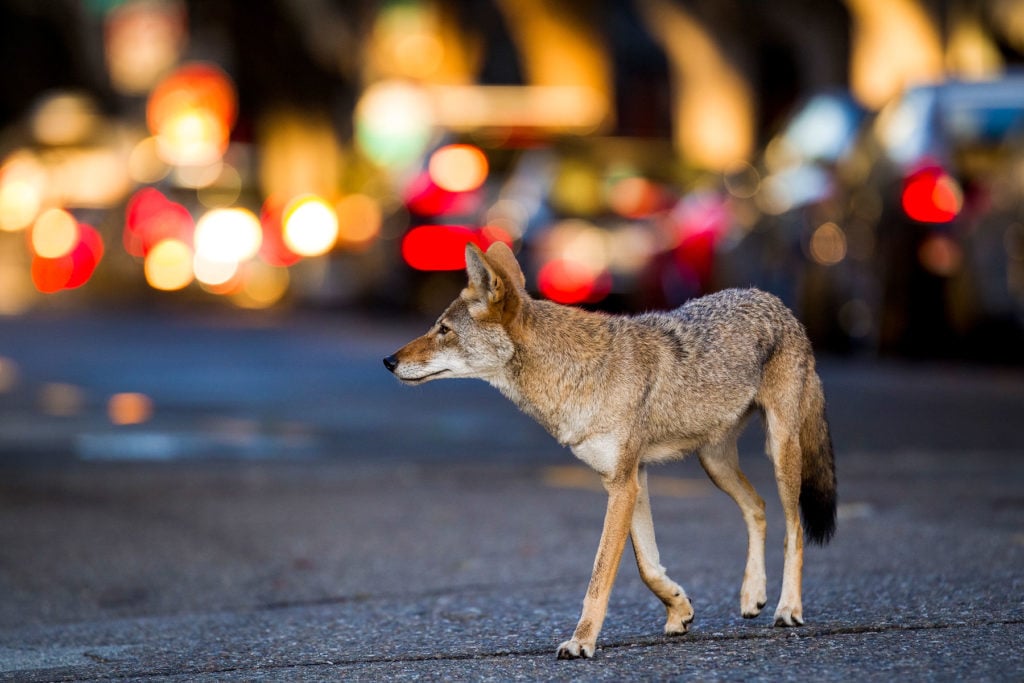Several urban species (wild animals found in urban areas) have adapted to living a life in the city. These successful city dwellers share common traits of resourcefulness and a flexible diet, writes Christine Dell’Amore for National Geographic. “We have this view of the wild as a pristine place,” says Suzanne MacDonald, a psychologist and biologist at York University in Toronto, Canada. “But humans in cities are changing the animals now.”
Coyotes have spread into nearly every locale across the U.S., even the Bronx. They will eat almost anything, from leather to backyard fruit, and emerge at night where video shows they’ve likely learned to observe traffic patterns. “It’s a pattern we’ve seen across the whole continent—they’re figuring out a way to deal with whatever we’ve done to the landscape,” says Chris Nagy, a wildlife biologist and co-founder of the research project Gotham Coyote.

Urban ecologists are studying whether urban animals are craftier than their rural kin at tackling challenges, explains Dell’Amore. The Barbados bullfinch is known for stealing sugar packets from restaurant terraces. In lab experiments, biologist Jean-Nicolas Audet found that urban birds performed better at getting food than their rural kin. In Bakersfield, California the San Joaquin kit fox lives on “people food” in its habitat of golf courses, drainage pits, vacant lots, and school campuses.
Despite the unhealthy diet, the foxes are doing well, according to a 2010 study in the Journal of Mammalogy. Katherine Ralles, co-author of the study believes their bad diets simply don’t have time to catch up with them—they don’t live as long as humans. For the wildlife that have chosen to make the city their home, experts believe it’s time to view them as one of us.
